The Pretty, Persistent Peach Tree Pest
Late July, while foraging through peach tree branches to pick the ripe fruit, I paused to stretch my back and was inundated with sawdust tumbling off the leaves. The more I looked, the more I realized the woody grains were localized in one area. Figuring the wind carried the debris onto my backyard tree, I hosed it off and went on with the day. But after several occasions of being greeted with a layer of sawdust on the same leaves, I grew curious. During an inspection of the old tree, I discovered two bore holes that penetrated into the wood over three inches deep with the openings as round as my index finger.
What on earth is drilling such large holes in this tree? I wondered.
After research revealed the attacker was a peach tree borer, Synanthedon exitiosa, I kept watch for the adult insect and larvae whose photos are displayed online at http://ipm.ucdavis.edu/PMG/r602301211.html (click the first word of the third sentence: Adults.) Although I never saw the “Adult peach tree borer” featured in one of the photos (which I later learned is the smaller more slender male whose both wings are transparent), I did see the female in my tree.
And let me tell you, this gal was gorgeous. She measured about one and a half inches long and sported a dark almost black steel-blue body with dark black-like forewings and clear hind wings with black margins. A brilliant orange band encircled her abdomen. (See photo below and visit http://bugguide.net/node/view/216752/bgpage for a great closeup shot).
Needless to say, I stood beside my peach tree transfixed — debating whether to bolt for the kitchen bug killer or race to the far end of the house to get my camera. The spray can won, so I let that flying flirt flitting through the branches have it. Despite searching both tree and ground for her body to preserve for pictures, I never saw the pretty and persistent Synanthedon exitiosa again.
Unfortunately, I learned that I’ll have to wait until next spring to know for sure if she’s really gone and how many borers she left behind. Since females lay an average of 500-600 eggs, who knows how many larvae are tunneling their way deeper through the bark and into the sapwood of my tree? Next spring I could come face to face with more culprits after pupation takes place and the next generation of moths emerge. To prevent the possibility of another attack, I filled the bore holes with the bug killer and my husband sawed off the large tree limb that was penetrated. In the meantime, I’ll encourage the ants, spiders and lacewings and the birds that prey on the eggs and larvae.
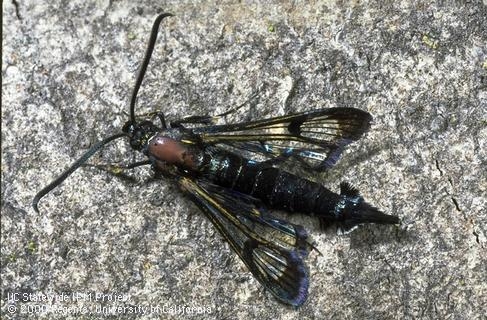
Adult male peachtree borer (photo UC IPM online)
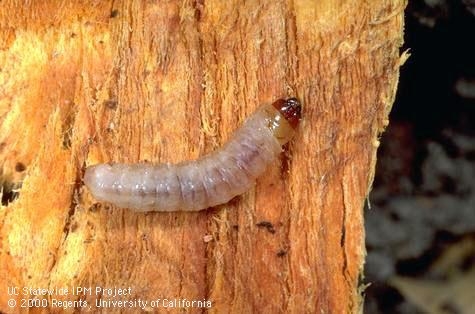
Peach tree borer larva (photo UC IPM online)
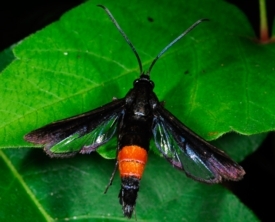
Female peach tree borer (photo from Univ. of Kentucky Ag. dept)
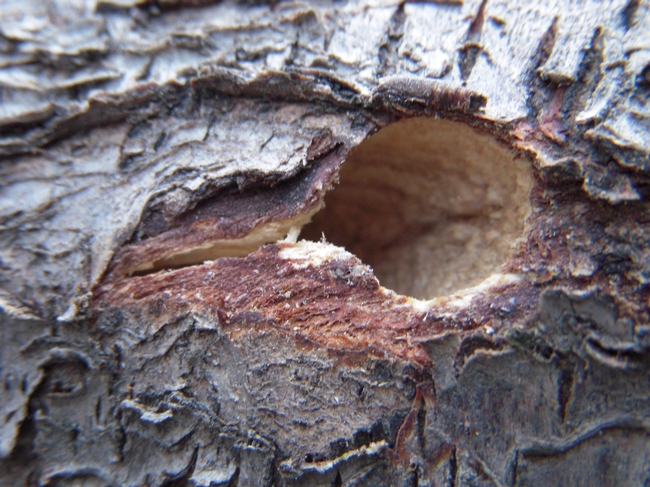
Bore hole on side of limb - photo by Launa Herrmann
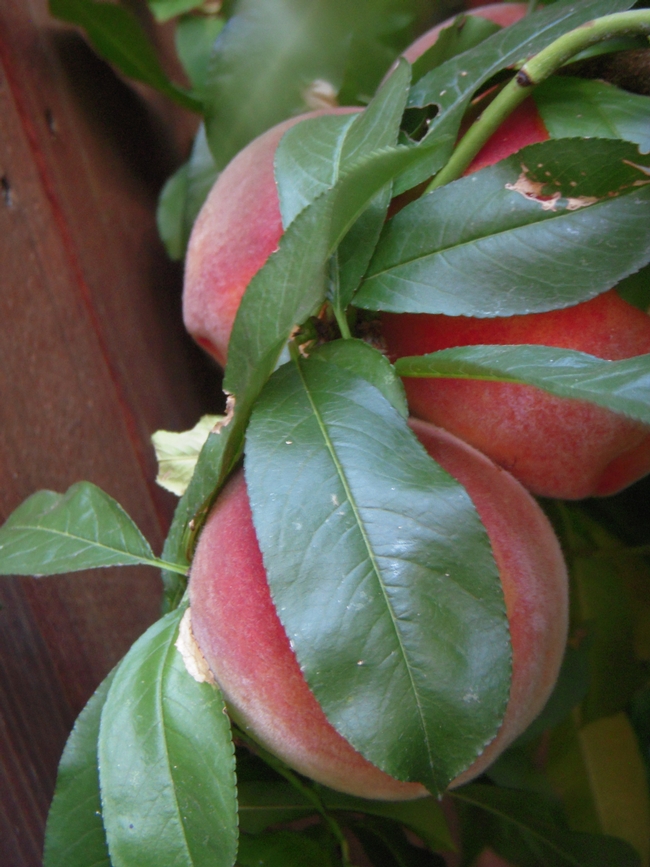
Peaches by Launa Herrmann

